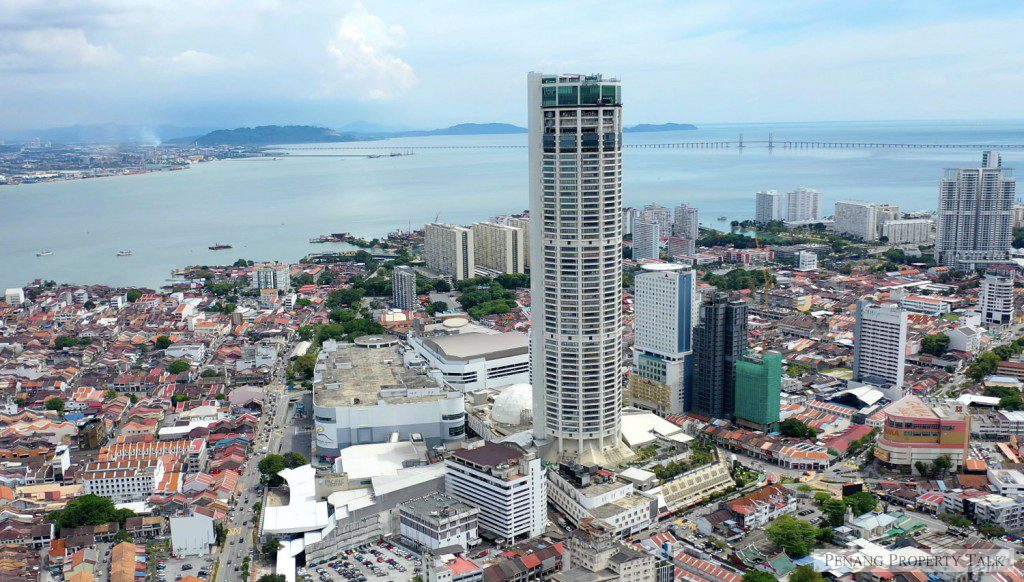Penang population shrunk 0.1%
Experts are warning of looming challenges ahead as the population of Penang, long the northern manufacturing and cultural hub, shrank for the second consecutive year.
Among the challenges are the state’s workforce supply for its factories as well as housing and retail demand.
In 2020, the state’s population stood at 1.7404 million. It slipped to 1.74 million last year and this year, the Statistics Department forecast it at 1.7386 million, representing a 0.1% shrinkage.
These numbers include both Malaysians and foreigners living in Penang.
While the state’s overall population is dropping, Penang’s senior citizens (over 60) population went up from 7.1% of the total population last year to 7.5% this year.
In its report released on Dec 23, the department said the composition of the population aged 0 to 14 years this year decreased to 19.4% compared with 19.7% last year; and those aged 15 to 64 years (working age) decreased from 73.2% in 2021 to 73.1% in 2022.
It reported that the island’s Northeast District (covering areas like George Town, Ayer Itam, Tanjung Bungah and Batu Ferringhi) suffered the greatest shrinkage at 0.5%, while South Seberang Prai District (near the second Penang bridge) saw a population spurt of 1.4% this year.
There are markedly more people living on mainland Penang now than on the island – 947,400 versus 791,200.
The state’s government research house and think tank Penang Institute’s executive director Datuk Dr Ooi Kee Beng said he suspects the drop in Penang’s population size may have been under-reported but the full extent could not be detected by the Statistics Department due to the lack of data for tracking domestic migrations (between states).
“Many people leave for other cities without reporting that to the authorities until much later.
“No doubt, there are people from other states moving to Penang who also did not report their move, but I would think that Penang’s unrecorded emigration level is higher than its unrecorded immigration level,” he said.
Besides Penang, the department reported that Sabah’s population also shrank by 0.6% and Kuala Lumpur’s by 1%. All other regions in Malaysia showed population growth this year.
Ooi said since Penang is vital to the continual high-tech industrialisation of Malaysia, the declining population trend here is something the federal and state governments should study closely.
“Penang is Malaysia’s most dynamic industrial state. There needs to be more developmental investment here, especially in the form of infrastructure upgrades and logistical support.
“No doubt, one can say that having more investments than we can immediately handle is a good problem, but in the medium and long term, raising the liveability standards in Penang even further is critical to Penang’s – and therefore Malaysia’s – successful climb up the industrial value-added scale.
“Having good schools, public security, good public transport, and competitive wages play a huge role in making Penang more attractive and more liveable than it is now,” he added.
Ooi also noted that reviving the national economy, a key concern of the new government under Prime Minister Datuk Seri Anwar Ibrahim, requires that attention and investments be directed at where advancement into Industrial Revolution 4.0 is most promising.
“This is how the latest technologies and production processes can be imported into the country, for the betterment of the national labour force, and for the country’s small and medium enterprises to grow,” he said.
The Statistics Department also reported that the number of foreigners officially living in Penang dropped from 140,500 in 2020 to 127,200.
Economist Prof Dr Geoffrey Williams of Malaysia University of Science and Technology said the fall might be due to foreign workers who had left due to the pandemic lockdowns.
“Besides, there are foreign retirees who left because there are better, cheaper and more welcoming places to retire at elsewhere in the world.
“To stop this, we need better incentives to welcome foreigners, with easier long-term visas, better tax treatment and a reinstated Malaysia My Second Home (MM2H) system, removing expensive financial requirements,” he said, adding that this is a national problem that affects Penang and Johor most.
Economist Kapt (R) Dr Joshua Loo of UOW Malaysia KDU said Penang’s population in the past had been growing by around 1% to 1.7%.
The shrinking population, he said, affects Penang’s active private tertiary education sector, which has about 50 private colleges, universities and other institutions.
But Loo is optimistic that next year will bring improvements for Penang.
“The pandemic was a great reset for all players in every sector. Everyone is starting from scratch.
“With the federal and state governments now in a good relationship, I am confident that Penang will continue again to attract more people to live here,” he said.
Source: TheStar.com.my


